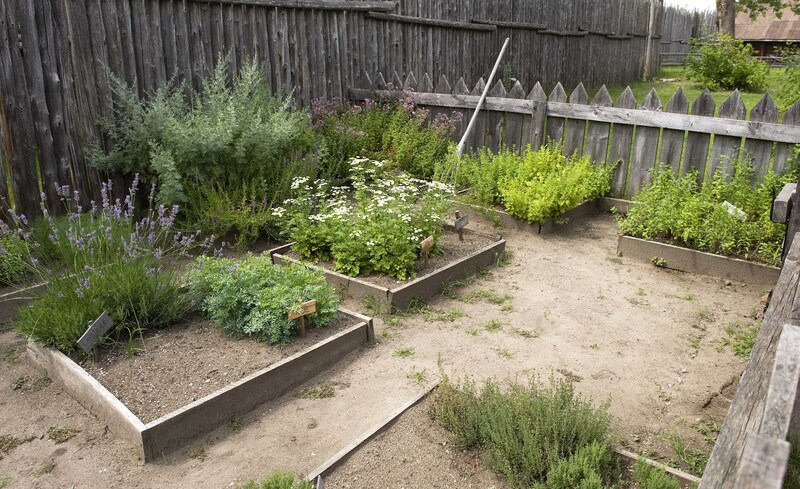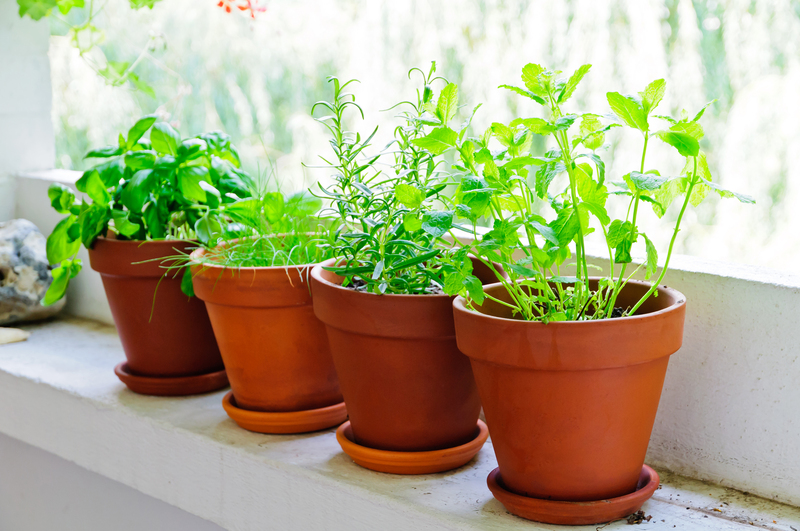Dominate Weeds with These 3 Essential Control Tips
Posted on 30/08/2025
Dominate Weeds with These 3 Essential Control Tips
Weeds can be a relentless foe for gardeners, homeowners, and landscapers alike. Not only do they compete with your prized plants and grass for nutrients and sunlight, but they can also diminish the overall aesthetic of your outdoor spaces. If you've ever wondered how to dominate weeds and restore the lush, beautiful landscape you've always envisioned, you're in the right place. This comprehensive guide unveils three essential weed control tips that will keep these pesky plants in check--leaving you with a thriving, weed-free garden or lawn.

Understanding the Weed Problem
Before we dive into the best strategies for weed control, it's crucial to understand your enemy. Weeds come in many shapes and sizes, from annual invaders like crabgrass to tenacious perennials such as dandelions and bindweed. They are resilient, fast-growing, and often spread through both seeds and roots, making them difficult to eradicate once they take hold. But with the right tactics, it's possible to dominate your weeds and enjoy a pristine landscape season after season.
Why Are Weeds Such a Persistent Problem?
- High Reproduction Rates: Many weeds produce thousands of seeds per plant, ensuring new generations return year after year.
- Efficient Dispersal Mechanisms: Wind, water, animals, and even your lawnmower can carry weed seeds across wide areas.
- Resilient Roots: Perennial weeds store energy in deep roots, making them difficult to completely remove by pulling or cutting.
- Competitive Growth: Weeds outcompete desirable plants by quickly absorbing moisture and nutrients.
With this understanding, it's clear that a targeted, proactive weed management plan is necessary for long-lasting results. Let's jump into the three most effective weed control tips to reclaim your garden and landscape.
1. Smother Weeds with Mulch: Nature's Barrier
What is Mulching and Why is it Effective?
*Mulching* is the practice of placing a protective layer of organic or inorganic material on the soil surface. Not only does mulch conserve moisture, moderate soil temperature, and add curb appeal, it is also a highly effective weed suppression tool.
- Blocks Light: Mulch prevents light from reaching weed seeds, vastly reducing germination rates.
- Smothers Seedlings: Any emerging weeds are suffocated beneath the mulch and cannot grow to maturity.
- Improves Soil Health: Organic mulches feed the soil as they break down, giving your desirable plants a boost.
How to Apply Mulch for Maximum Weed Control
- Choose the Right Mulch: Select between organic materials like shredded bark, wood chips, straw, or compost, or inorganic options like landscape fabric, gravel, or rubber mulch.
- Prep the Area: Remove existing weeds by hand-pulling or using a hoe. Water the soil to help existing plants establish roots.
- Apply Mulch Deeply: Spread mulch to a depth of 2-4 inches for optimal weed suppression. Be careful not to pile mulch against stems or trunks, as this may cause rot.
- Maintain Regularly: Replenish mulch annually to maintain the barrier and keep your weed prevention going strong.
By integrating mulching into your gardening routine, you're establishing a physical and ecological barrier that weeds will struggle to overcome. This simple yet powerful step is integral for anyone looking to dominate and control weeds season after season.
2. Outcompete Weeds with Dense, Healthy Plantings
The Power of a Lush Lawn and Vibrant Beds
A thick, vigorously growing lawn or densely planted garden bed is one of the best defenses against weeds. When you maximize plant coverage, you minimize open space for weeds to establish. The principle is simple: Healthy plants shade and crowd out weeds.
- Shaded Soil: Densely growing plants prevent sunlight from penetrating the soil, which is essential for weed seeds to germinate.
- Nutrient Competition: Strong, established plants use up the available nutrients and moisture, leaving little for weeds to exploit.
- Quick Recovery: Well-maintained lawns and beds can recover from disturbance faster, closing gaps before weeds can invade.
How to Grow a Thicker Lawn and Lush Beds
- Choose the Right Plants: Select turfgrasses and plants suited for your climate, soil, and sun exposure. Healthy, appropriate species naturally form tighter canopies.
- Fertilize Wisely: Apply balanced fertilizers based on a soil test to encourage strong root and foliage growth without overfeeding (which can promote weeds, too).
- Mow High: Set lawnmower blades to cut no lower than 3 inches. Taller grass shades soil and outcompetes weed seedlings.
- Water Deeply But Infrequently: Deep watering encourages deep root growth, supporting turf and garden plants to compete more effectively.
- Fill in Bare Spots Promptly: Overseed lawns and add new plants to garden beds as soon as gaps appear.
A lush, competitive planting strategy doesn't just reduce weed problems--it also enhances the health and beauty of your landscape. By giving desired plants the advantage, you'll make it nearly impossible for weeds to gain a foothold.
3. Be Strategic with Manual and Chemical Weed Removal
When to Use Pulling, Hoeing, and Safe Herbicides
Even with mulching and dense planting, some weeds will inevitably appear. Quick, targeted intervention keeps these outbreaks from spiraling out of control. Here's how to remove weeds efficiently--and safely.
Manual Weed Removal Techniques
- Hand Pulling: For small infestations and taproot weeds, pull weeds when the soil is moist to remove the entire root. Grasp firmly at the base and pull slowly.
- Hoeing: Use a sharp hoe to slice off annual weeds just below the soil surface. Do this regularly to prevent re-sprouting and seed formation.
- Prevent Seed Spread: Always collect and dispose of weeds before they flower and produce seeds.
Chemical Approaches: Safe, Targeted Use
Chemical weed killers, or herbicides, can be useful when dealing with tough perennial weeds or large areas. But safety and selectivity are paramount:
- Select the Right Product: Use selective herbicides for lawns (broadleaf killers for dandelions, etc.) and non-selective for landscape beds (glyphosate or vinegar sprays, for example).
- Apply at the Right Time: Target weeds during active growth, usually in spring or fall, for maximum effectiveness.
- Minimize Drift: Apply on calm days and use shielded sprayers to avoid harming desirable plants.
- Combine with Other Methods: Use herbicides as part of an integrated weed management plan, never as the sole solution.
For organic or chemical-free gardens, consider alternatives like boiling water, flame weeders, or vinegar. These can provide spot treatment for stubborn weeds without chemical residues.
Prevention: The Secret to Staying Weed-Free
Prevention is often easier--and more effective--than cure. Once you've tackled existing weeds, adopt these habits to keep your landscape dominated, not overrun:
- Inspect Regularly: Scan for new weed growth weekly and act quickly.
- Clean Tools and Shoes: Avoid transporting seeds from one area to another.
- Use Quality Seeds and Soil: Make sure new plants and soils are certified weed-free.
- Maintain Edges: Install physical barriers, edging, or deep borders between lawns, beds, and naturalized areas.
Through consistent and strategic practices, you can prevent major weed outbreaks before they begin.

Common Weeds and How to Beat Them
To further dominate your weeds, it helps to know your top adversaries. Here are a few common garden weeds and tips for control:
- Dandelion: Pull when soil is moist, ensuring to remove the entire taproot. Use a broadleaf herbicide for lawns.
- Crabgrass: Apply pre-emergent crabgrass preventer in early spring; maintain a thick turf to shade it out.
- Clover: Overseed bare spots and fertilize adequately; manual removal works for small outbreaks.
- Bindweed: Persistent hoeing and cutting reduce roots' energy; spot-treatment with herbicide for severe cases.
- Lamb's Quarters: Hoe or pull before flowering; use mulch in beds to block new seedlings.
For more persistent or invasive species, consult a local extension office or certified landscape professional.
Conclusion: Take Charge and Dominate Weeds
With the right mix of science, strategy, and persistence, you can dominate garden weeds and reclaim the beauty and productivity of your outdoor spaces. Let's recap the three essentials:
- Mulch Deeply: Block light and smother weeds before they grow.
- Grow Dense: Outcompete weeds with lush, healthy plants and lawns.
- Remove Quickly: Use manual, mechanical, or safe chemical removal as needed for spot control.
Combining these proven weed control tips will turn the tide in your favor. Every weed you prevent or remove is one less competitor draining resources from your garden. Adopt these methods today to dominate weeds--and enjoy a thriving, beautiful landscape all season long!



